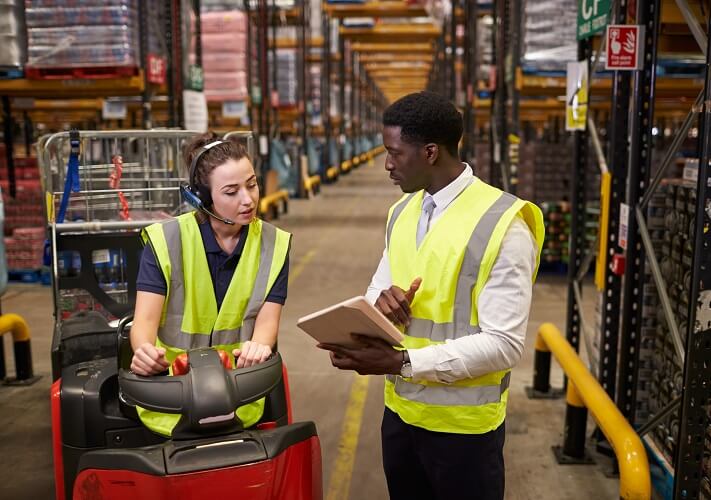As the threat of climate change and other global dangers pervades, sustainability is and will continue to be a pressing topic in the IT manufacturing industry. One way original equipment manufacturers (OEMs) can enhance their environmental, social and governance (ESG) efforts is by building a more sustainable supply chain. The stronger your dedication to and the impacts of your ESG efforts, the better chance your business has at succeeding overall as well as attracting socially responsible partners, employees and investors.
Companies that are more prudent with resources, such as water, coal, oil, and electricity, are predicted to fare better in a future where those resources may be limited in certain areas. Similarly, a company’s social profile is more important than ever in a time where a single Tweet can negatively impact an entire brand or company’s reputation. And as more laws and regulations arise around technology, most notably GDPR, a strong commitment to proper governance and compliance will be crucial for keeping a company operating and in business.”
—CIO, "What is ESG? Environmental, social, and governance commitment explained"
Understanding the Drive for Sustainability in Technology
The IDC predicts that by 2026, ESG performance will be viewed as a top-three decision factor for IT equipment purchases and that more than 50% of requests for proposal (RFPs) will include metrics regarding carbon emissions, material use and labor conditions.
In logistics, the data indicates that reducing the number of trucks on the road can have a significant impact on greenhouse gas emissions:
- 87% of the carbon emissions in logistics are driven by transportation
- 30% of greenhouse gas emissions come from vehicles
- 25% of transportation-based emissions come from trucks
Not only are investors and business partners looking for ESG-driven businesses, but so are customers and employees:
- 66% of consumers actively seek out eco-friendly brands
- 55% of consumers will pay more for products from companies that demonstrate sustainability
- 39% of consumers will permanently boycott their favorite brand if they detect a value mismatch
- 30% of employees would consider switching jobs to work for a more sustainable company
- 70% of jobseekers take a potential employer’s environmental record into consideration when deciding where to apply
5 Steps to Reduce Your Carbon Footprint With a More Sustainable Supply Chain
Analyzing your manufacturing operations and logistics network can highlight some key areas for sustainable supply chain wins.
-
Optimize Packaging and Use Greener Materials
While reducing the number of trucks on the road may seem counterintuitive when you’re trying to grow your business, taking the steps to optimize the packaging used throughout your supply chain can dramatically reduce the space and weight requirements of your products. Adjustments like this allow you to move more goods with fewer trucks — meaning, fewer trucks on the road.
To optimize packaging, consider replacing disposable cardboard and single-use plastics with intelligent returnable solutions. This might include reusable pallets, racks and bulk containers and/or returnable or recyclable packaging solutions, which can move product more efficiently and safely throughout the supply chain. More thoughtful consumer packaging and alternative or recycled materials can have a similar effect.
Case in Point: Apple
When it comes to optimized packaging, Apple leads the charge with the iPhone, which fits into just-the-right-sized packaging, with no space wasted. In 2020, Apple slashed its packaging in half, giving the company the ability to fit 70% more phones on a pallet. This enables Apple to ship more products in a smaller amount of space and keep greenhouse emissions low.
In 2021, nearly 20% of all material used in Apple products was recycled — the highest-ever use of recycled content — and 59% of all the aluminum Apple shipped in its products came from recycled sources, with many products featuring 100% recycled aluminum in the enclosure. Apple has a goal of completely eliminating plastics from its packaging by 2025 and has already reduced the use of single-use plastic in its packaging by 75% compared with 2015.
-
Construct Your Warehouse Footprint Carefully
Transforming your transportation fleet to electric vehicles is an ideal solution for reducing carbon emissions, but in the US, electric vehicles currently comprise less than 1% of vehicles on the road. And it’s an expense many companies can’t afford right now, as transportation costs often already account for up to 50% of total supply chain costs in distribution.
Instead, choosing warehouse sites that are either close to major shipping ports or in centralized locations can help reduce the distance from the warehouse to the final consumer, which ultimately lowers transportation costs and makes a significant contribution to reducing your supply chain carbon footprint.
Additionally, with approximately 13% of logistics carbon emissions coming from warehouses, there’s another opportunity to enforce a sustainable supply chain. Optimizing your inventory to minimize space consumption can eliminate the need to increase physical warehouse space as your business grows. Good warehouse management can also help you better forecast demand to avoid overstocking. In addition, an efficient warehouse layout reduces unnecessary material movements, which can reduce the energy required to move product through the facility along with heating and cooling requirements.
-
Build Fault Tolerance into Your Supply Chain Strategy
In response to the supply chain challenges and disruptions that surfaced during the global COVID-19 pandemic, business leaders are looking for innovative ways to strengthen their global supply chain strategies so they can better withstand potential disruptions in the future. Many OEM leaders need a strategy that meets immediate customer demands while also building sustainability and fault tolerance into their procurement and distribution processes. This includes a diversified sourcing strategy that factors in supplier redundancy. Effective, fault-tolerant global supply chain strategies are built on a combination of nearshoring, multi-sourcing and strategic partnerships.
-
Prioritize Ethics in Supply Chain Management
Setting and adhering to standards for supply chain ethics helps to address both environmental and human rights challenges. Businesses have a responsibility to insist upon and assess their own ethical operations as well as those of their suppliers based on these standards.
Businesses that both value and prioritize ethics in supply chain management will create an environment for future participation in the global economy and also reap benefits that build their bottom line, including:
- Bolstered commitment to ESG efforts, which can enhance brand loyalty
- Reduced waste through a circular economy philosophy, which considers what happens at a product’s end of life
- Improved quality control, streamlined operational efficiencies and increased cost savings
-
Leverage a Custom Global Logistics Solution
Acting on an ESG plan to lower your carbon footprint not only demonstrates your commitment to sustainability, but it is also an important step toward coordinated action that can diminish or even reverse the effects of global climate change. Outsourcing supply chain and logistics activities to an expert partner with a commitment to ESG principles is one way to help you meet your sustainability goals and free up resources to focus on other important initiatives.
With a custom global logistics solution managed through a single services partner, you can reduce overhead costs and support your supply chain more efficiently by modernizing customer relationships, making data-informed decisions and establishing or expanding your global footprint with strategically located facilities.
Ready to take the next step on your ESG journey? Discover best practices for a closed-loop supply chain and circular economy adoption in the whitepaper, “Your Guide to Actionable Sustainability in IT."
About the Author David House joined Shyft Global Services in February 2017 via the Avnet Technology Solutions acquisition and serves as the Vice President of Supply Chain Management Services for Shyft. David has more than two decades of experience in the technology industry and is focused on developing and implementing global supply chain strategies that prioritize service delivery excellence and world-class customer experiences.
David House joined Shyft Global Services in February 2017 via the Avnet Technology Solutions acquisition and serves as the Vice President of Supply Chain Management Services for Shyft. David has more than two decades of experience in the technology industry and is focused on developing and implementing global supply chain strategies that prioritize service delivery excellence and world-class customer experiences.





